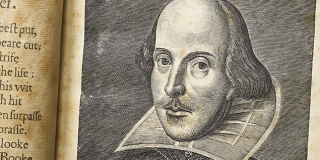
Cuneiform tablets
Clay, Iraq, 3rd–2nd millennia BCE
Babylonian Tablets, Manuscripts and Archives Division
Cuneiform tablets
The Manuscripts and Archives Division of The New York Public Library holds approximately 700 artifacts inscribed in an ancient writing system known as cuneiform (Latin cuneus, “wedge,” referring to the triangular shape left by the impression of the stylus in the clay). The script was invented in the mid-4th millennium BCE in the region known as Mesopotamia (Greek for “Land between the Rivers”) in what is now Iraq. These artifacts were bequeathed by the Library’s chief bibliographer, Wilberforce Eames. Today, we are able to re-engage with the societies of ancient Mesopotamia—their beliefs, art, literature, scientific accomplishments, and much more—thanks to the pioneering work of 19th-century scholars to decipher cuneiform.
Mesopotamian cuneiform was mainly used during the 3rd to 1st millennia BCE to write texts in the Sumerian and Akkadian languages, although it was also adapted to other languages such as Elamite and Hittite. Students of cuneiform learned up to 1,000 different characters impressed into damp clay by styli made of reed or bone. Cuneiform characters, each having a number of different readings and meanings, could be used to represent syllables or whole words. Vast scholarly lists of the 2nd and 1st millennia BCE collect these different sign values.
Group 1: School Life
1. School lentil with literary extract
Old Babylonian (1880–1595 BCE)
2. School lentil with proverb
Old Babylonian (1880–1595 BCE)
3. School tablet with literary extract
Old Babylonian (1880–1595 BCE)
4. Extract of a word list of fields
Old Babylonian (1880–1595 BCE)
5. Mathematical exercise
Old Babylonian (1880–1595 BCE)
“One enters it blind, leaves it seeing”—this is how a well-known riddle describes the Mesopotamian school. But unlike modern educational institutions, pupils were mostly taught in the homes of master scribes. Among the skills acquired at school were making a clay tablet, using a stylus to impress signs, and memorizing thousands of lines of text. The examples on display here show a few of these exercises. They cover short extracts from literary texts (Nos. 1 and 3), proverbs (No. 2), and word lists (No. 4). Mathematical exercises were part of the curriculum as well (No. 5).
Group 2: Bureaucracy and Trade
6. Administrative document
Old Akkadian (ca. 2350–2150 BCE)
7. Legal document, sale contract (tablet within sealed envelope)
Old Babylonian (ca. 1900–1600 BCE)
8. Sale contract, land
Old Babylonian (ca. 1900–1600 BCE)
9. Administrative document
Old Akkadian (ca. 2350–2150 BCE)
10. Legal document
Neo-Babylonian (ca. 626–539 BCE)
11. Monthly account
Ur III (2110–2003 BCE)
12. Sealed receipt, house sale
Ur III (2110–2003 BCE)
13. Sealed receipt
Ur III (2110–2003 BCE)
14. Account
Ur III (2110–2003 BCE)
15. Sealed clay bulla (seal)
Ur III (2110–2003 BCE)
16. Messenger text
Ur III (2110–2003 BCE)
17. Sealed administrative account
Ur III (2110–2003 BCE)
The last century of the 3rd millennium BCE, ruled by the Third Dynasty of Ur, or Ur III (ca. 2110–2003 BCE), has left us more economic records than any other ancient historical period. At least 100,000 such documents are kept in museums and collections worldwide. The records deal with incoming and outgoing commodities, labor forces, rations, harvest, water management, and many other parts of the economy. Some of these records bear impressions of cylinder seals that served as a type of signature.
The rare pyramidal clay artifact (No. 12), for instance, attesting to a house sale, was originally affixed to a wooden peg (similar to the clay pegs shown here among the royal inscriptions), which was probably driven into the wall of the sold property.
Group 3: Royal Ideology
18. Inscription of Enmetena
Early Dynastic IIIb (ca. 2500–2340 BCE)
19. Inscription of Gudea of Lagash, stone foundation tablet
Lagash II (ca. 2200–2100 BCE)
20. Inscription of Warad-Sin
Early Old Babylonian (ca. 2000–1800 BCE)
21. Clay barrel cylinder with inscription of Nebuchadnezzar II
Neo-Babylonian (ca. 626–539 BCE)
22. Clay cylinder with inscription of Nebuchadnezzar II
Neo-Babylonian (ca. 626–539 BCE)
23. Clay cylinder with inscription of Nebuchadnezzar II
Neo-Babylonian (ca. 626–539 BCE)
24. Stone door socket with inscription of Naram-Sin
Old Akkadian (ca. 2288–2111 BCE)
Throughout the millennia, kings have used writing as a tool to commemorate their deeds for perpetuity. Royal inscriptions on clay cones, cylinders, and tablets are on display here. These inscriptions were deposited in the foundations of official architecture, where they could be rediscovered during later renovations. Nebuchadnezzar II (reigned 605–562 BCE), for instance, left the large clay barrel cylinder (No. 21), which mentions his restoration of a temple in Marad (modern Tell Wannat as-Sa’dun in southern Iraq). According to this inscription, he looked for the original ground plan of the temple and found an inscription of a previous ruler reigning some 1,600 years earlier. That king, Naram-Sin, left the very door socket on display here (No. 24) in the temple Nebuchadnezzar mentions.
Excerpt of inscription on clay barrel cylinder (No. 21)
As for Lugal-Marada, my lord, whose temple in Marad and whose ancient foundation platform no former king had seen since the days of old, at that time I looked for and found its ancient foundation platform, and upon the platform of King Naram-Sin, my ancient ancestor, I fixed its (new) foundations. I created an inscription written in my name and put it therein.
: Babylonian Tablets, Manuscripts and Archives Division
Currently on View at Stephen A. Schwarzman Building
The New York Public Library believes that this item is in the public domain under the laws of the United States, but did not make a determination as to its copyright status under the copyright laws of other countries. This item may not be in the public domain under the laws of other countries. Though not required, if you want to credit us as the source, please use the following statement, "From The New York Public Library," and provide a link back to the item on our Digital Collections site. Doing so helps us track how our collection is used and helps justify freely releasing even more content in the future.






